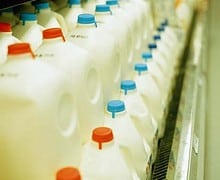Do you know when a food is past its prime?
Most food products have dates stamped on the packaging. This date helps the store know how long to display a product, and it also helps you know the time limit to purchase or use the product at its best quality. But the array of expiration dates can dizzying. Use by? Sell by? Color us confused!
We’re not alone. One survey, which tracked how much money we waste throwing away perfectly good food, found three in four U.S. consumers believe certain foods are unsafe to eat after the date on the packaging has passed. Experts, however, say if most foods are stored properly, they can be safe for days after the use-by date.
The most common labels are sell by, use by and expiration date. Here’s our quick checklist of what they mean:
Sell-by Date This date tells the store how long to stock the product for sale. Buy the product before this date.
Use-by Date This is the last date the product will maintain its optimum freshness, flavor and texture—but it is usually still safe to consume the product for a few days after this date has passed. Eggs, for example, can be good three to five weeks past their use-by date.
Expiration Date If you haven’t used a product by this date, toss it. Dry goods—cake mix, cereal, flour, rice, sugar—are the exception to this rule. Stored properly (think closed containers) these can last for months past their expiration date; cereal can last a year.






